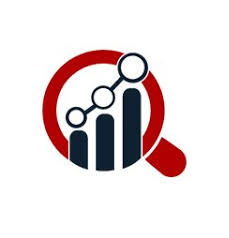Polyvinyl Butyral (PVB) is a versatile polymer primarily used in the automotive and architectural industries for laminated safety glass. PVB's unique properties, such as strong binding, optical clarity, and flexibility, make it an essential component in various applications. This blog delves into the North America Polyvinyl Butyral Market, exploring its key drivers, trends, challenges, and future prospects.
Market Overview
The PVB market has witnessed significant growth over the past decade, driven by increasing demand from the automotive and construction industries. The global Polyvinyl Butyral Market is projected to reach over USD 4.12 billion in terms of value by 2030, growing with the CAGR of 5.8% during the forecast period.
Key Drivers
-
Automotive Industry Growth: The automotive sector is a major consumer of PVB, primarily for laminated safety glass in windshields and side windows. With the rise in vehicle production, particularly in emerging economies, the demand for PVB is on the rise. Additionally, the shift towards electric vehicles (EVs) is creating new opportunities, as these vehicles often feature advanced glazing systems to enhance energy efficiency and passenger safety.
-
Construction Boom: The construction industry, especially the architectural segment, is another significant driver of the PVB market. The increasing focus on safety and aesthetics in building designs has led to a surge in demand for laminated safety glass. PVB's ability to provide UV protection and noise reduction further boosts its adoption in commercial and residential buildings.
-
Technological Advancements: Innovations in PVB manufacturing processes and formulations have improved the performance and applications of PVB films. Advances in PVB interlayers have enhanced their acoustic properties, color stability, and overall durability, making them more attractive to end-users.
Market Trends
-
Sustainability Focus: With growing environmental concerns, there is a notable shift towards sustainable and eco-friendly materials. The PVB market is witnessing a trend towards recycling and reusing PVB films from decommissioned laminated glass. This not only reduces waste but also aligns with global sustainability goals.
-
Increased Use in Solar Energy: PVB films are finding new applications in the solar energy sector. They are used in the encapsulation of solar panels to improve durability and efficiency. As the world moves towards renewable energy sources, this trend is expected to bolster the PVB market.
-
Emerging Markets: Asia-Pacific is emerging as a key market for PVB, driven by rapid urbanization, infrastructure development, and the booming automotive industry. Countries like China and India are witnessing significant investments in construction and automotive sectors, creating substantial growth opportunities for PVB manufacturers.
Challenges
-
Volatility in Raw Material Prices: The PVB market is highly dependent on the prices of raw materials such as polyvinyl alcohol and butyraldehyde. Fluctuations in the prices of these raw materials can impact the overall cost structure, affecting profitability for manufacturers.
-
Regulatory Hurdles: The production and use of PVB are subject to stringent environmental regulations. Compliance with these regulations can be challenging and may require significant investments in cleaner technologies and processes.
-
Competition from Alternatives: The PVB market faces competition from alternative materials like ethylene-vinyl acetate (EVA) and thermoplastic polyurethane (TPU). These alternatives offer similar properties and are sometimes preferred due to cost or specific application requirements.
Future Prospects
The future of the PVB market looks promising, with continuous advancements in technology and increasing applications in emerging sectors. The integration of PVB films in smart glass technologies, which can change properties in response to environmental conditions, is expected to open new avenues for growth.
Furthermore, collaborations between PVB manufacturers and end-users in the automotive and construction industries will drive innovation and product development, ensuring the market's sustained growth.
MRFR recognizes the following companies as the key players in Polyvinyl Butyral Companies - Eastman Chemical Company (US), Kuraray Co., Ltd (Japan), DuPont (US), Sekisui Chemical Co., Ltd (Japan), Kingboard Chemical Holdings Limited (Hong Kong), Tiantai Kanglai Industrial Co., Ltd (China), Zhejiang Pulijin Plastic Co., Ltd (China), Chang Chun Petrochemicals Co. Ltd (China) , Everlam (Belgium), DuLite (US), and Anhui Wanwei Group Co., Ltd (China).
In conclusion, the North America Polyvinyl Butyral Market is poised for robust growth, driven by its versatile applications and the expanding automotive and construction industries. While challenges exist, the market's future is bright, with numerous opportunities for innovation and expansion.


